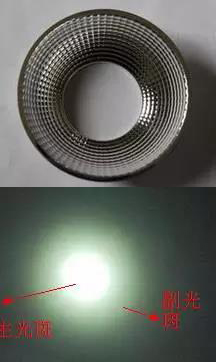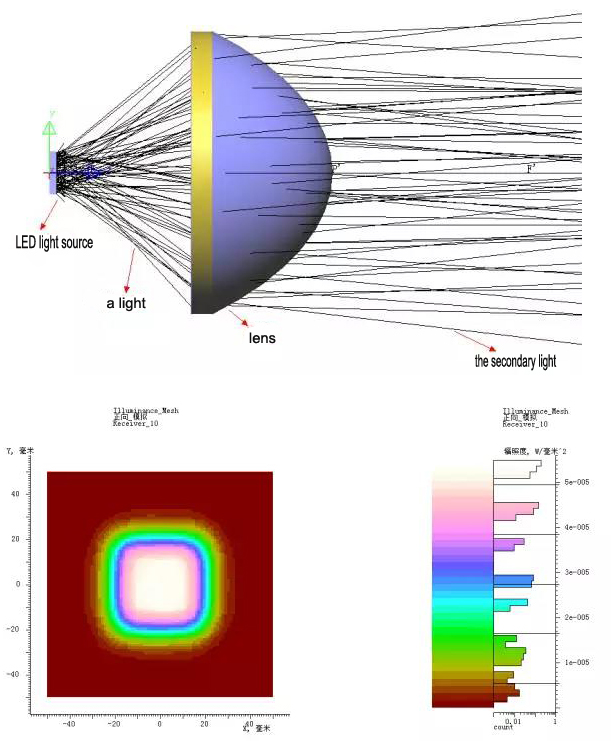What is reflection cup? What is lens? I’m sure many people are confused by this problem, the reflection cup and lens are the same, just the structure is different.
As we all know, reflection cups and lenses are belong to secondary optical devices. The effect is to light the light twice. They can be said to the core of the light effect of the lamps. Without this core application, the market may be return to the original stage, with solar tubes everywhere. So, let’s know about the difference between reflection cup and lens.

Reflection Cup
The artisans of making lights should know 120°the original light angle of LED. In order to achieve the use of light and reach the desired effect, the luminaire will use reflector to control the distance, area and the spot effect of light. The reflector is usually in the form of cup, which is collectively referred to as the reflection cup in the reflector industry.
The reflection cup is divided into two categories.
Metal reflection cup is usually made of aluminum, which needs pressing, polishing and oxidation. It is easy to form, also is recognized by the industry with low cost and high temperature resistance.
Plastic reflection cup needs to be finished by demoulding. Its optical precision is high, no deformation memory. The cost is relatively higher than the metal. But the effect of temperature resistance is no better than metal reflection cup. For the high temperature lamps, it is a low selectivity device.
What’s worthier mentioning, light form the light source to the reflection cup, not all the light is refracted through the refraction. The part of light without refracting is called deputy spot in optics, with a visual palliative.
Lens
Not only reflection cups are classified, but also lenses are classified. LED lenses are divided into lens and secondary lens. Generally speaking, we call a lens is secondary lens by default. That means that it is combined with LED light source. According to different requirements, different lenses can be used to achieve the desired optical effect.
The main circulating material of LED lens in the market is PMMA and PC. The transmittance of PMMA reaches 93%, but the transmittance of PC reaches 88%. However, the temperature resistance of PC is higher, its melting point can reach 135°, PMMA only can reach 90°. So, the two materials dominate the lens market with almost half the advantage.
Nowadays, the secondary lens is often used total reflection design (TIR). The design of lens is penetrate the spotlight. The conical surface can also collect and reflect the light from the side. When two kinds of light are overlapped, a perfect spot effect can be obtained. The efficiency of TIR lens can reach over 90%, beam angle is less than 60°, that can be applied to the lamp of small angle.
When to use a lens and when to use a reflective cup?
The effect of lens is relatively perfect, without the presence of the secondary spot, and the light shape is more beautiful. On the contrary, the effect of reflection cup is with secondary spot, and the light shape has stratification effect. A friend who believes in a normal aesthetic will fill a bit unsatisfactory for a picture with deputy spot, and even seem awkward. But, does mean that a reflection cup with deputy spot is useless? The answer is not true.
Changing another scene, reflection cup is still a reflection cup, deputy spot is still a deputy cup. However, when the effect of deputy spot is completely highlighted. It is not a level to be seen in its aesthetics. So, the problem, choose lens or reflection cup as a secondary light distribution components, is a difficult selection.
As a developer, you need to figure out where your need are, where you use them, what the prerequisites are, and what you need to achieve. Then, there is the further implementation process and the implementation plan. Or the same sentence, what effect you need is the same optical elements you think the best. They are not good or bad.

Next, we recommend the suitable lamps for reflection cup and lens (without optical requirements).
1.Down-Light (Wall Lamp)
Like the lamps of Down-Light, is usually installed on the wall of the corridor, which is one of the closest to the eyes. If the light intensity of lamps is strong, it is easy to show the psychological and physiological maladjustment. Therefore, the design of down-light, without special requirement, the effect of using reflector cup is better than lens. Because there is an excess of deputy spot, which does not cause the eyes to be uncomfortable when people walk in the corridor under the strong light intensity.
2.Floodlight (Spot Lamp)
The floodlight is usually to illuminate something, which needs a certain range and light intensity. What’s more important, it needs the object of irradiation to be clearly visible in the person’s vision. Therefore, like this kind of lighting, and far away from eyes, it usually do not to be uncomfortable for people. While design, using lens will be better than the reflective cup. In the case of single light source, it is better to use the pin-field lens. After all, it is not comparable to the general optical element.
3.Wall Washer Light
Wall washer light usually uses in metope to illuminate, its interior light source is more. It’s easy to get uncomfortable if you use a reflective cup with a strong deputy spot. Therefore, like the lamps of wall washer light, use lens is better than reflective cup.
4.Luminaire for Industrial Use
It’s really a hard choice to make. First of all, we know the application site of mining lamp, and the large area of large space such as factory building, toll booth and large shopping mall. There are a lot of factors that can’t be controlled, for example, the height and width can easily interfere with the application of lamps. Therefore, how do we choose a lens or reflection cup?
The best way to do that is to decide on a high level. We recommend to use reflection cup in installing height comparison base and a place close to eye, to use lens in relatively high installation height. Without any other reasons, the bottom is too close to the eye, it needs an overmuch, high with the eye distance too far, it needs a range.